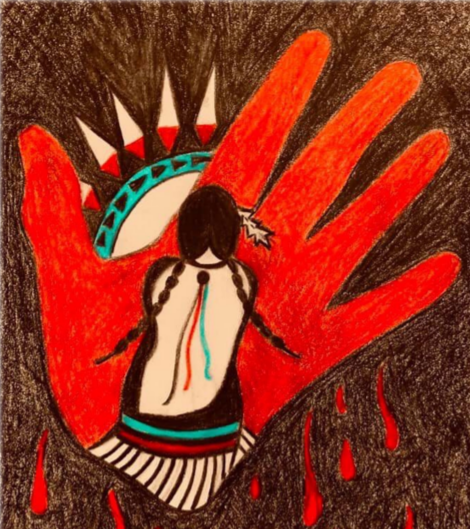
- Details
- By Native News Online Staff
LINCOLN, Neb. — In a study released late last month from the Nebraska State Patrol and other organizations reveal the majority of Native Americans missing in Nebraska are boys age 17 or younger.
The study, called LB154 Report: Prevalence of Missing Native American Women and Children in Nebraska; Barriers to Reporting and Investigating; and Opportunities for Partnerships, reports that nearly three quarters (73.3%) of the Native American missing persons are boys (age 17 years old or younger).
Named LB154 for a Nebraska legislative bill that commissioned the Nebraska State Patrol to study the high rates of missing American Indian women and children in the state. Through the 42-page LB154 Report, it was reported that Nebraska’s missing person rate on March 31, 2020 was 25.7 per 100,000 persons.
A majority of Nebraska’s missing persons are White (66.9%) compared to Black (19.7%), Native American (4.6%), or Asian or Pacific Islander (0.8%); 8.0% of the entries for missing persons list the race as “unknown.”
In comparison, 88.3% of Nebraska’s population is White, 5.1% is Black, 1.5% is Native American, and 2.8% is Asian or Pacific Islander, according to the U.S. Census. A disproportionate number of Nebraska’s reported missing persons are Black (3.9 times their population) or Native American (3.1 times their population).
More missing Native American persons are minors and Native American missing persons cases are open (unsolved) longer when compared to Nebraska’s total missing persons, the report notes.
Requests by both Nebraska State Patrol and the Nebraska Commission on Indian Affairs (NCIA) at community listening sessions as well as research by the NCIA project coordinator did not uncover any unreported cases of Native American missing persons.
More Stories Like This
Native News Weekly (August 25, 2024): D.C. BriefsUS Presidents in Their Own Words Concerning American Indians
Merry Christmas 2025
Navajo Man Faces Vehicular Homicide Charge After Child Killed at Navajo Nation Christmas Parade
Next on Native Bidaské: Lumbee Tribal Chairman John Lowery
Help us defend tribal sovereignty.
At Native News Online, our mission is rooted in telling the stories that strengthen sovereignty and uplift Indigenous voices — not just at year’s end, but every single day.
Because of your generosity last year, we were able to keep our reporters on the ground in tribal communities, at national gatherings and in the halls of Congress — covering the issues that matter most to Indian Country: sovereignty, culture, education, health and economic opportunity.
That support sustained us through a tough year in 2025. Now, as we look to the year ahead, we need your help right now to ensure warrior journalism remains strong — reporting that defends tribal sovereignty, amplifies Native truth, and holds power accountable.
 The stakes couldn't be higher. Your support keeps Native voices heard, Native stories told and Native sovereignty defended.
The stakes couldn't be higher. Your support keeps Native voices heard, Native stories told and Native sovereignty defended.
Stand with Warrior Journalism today.
Levi Rickert (Potawatomi), Editor & Publisher

